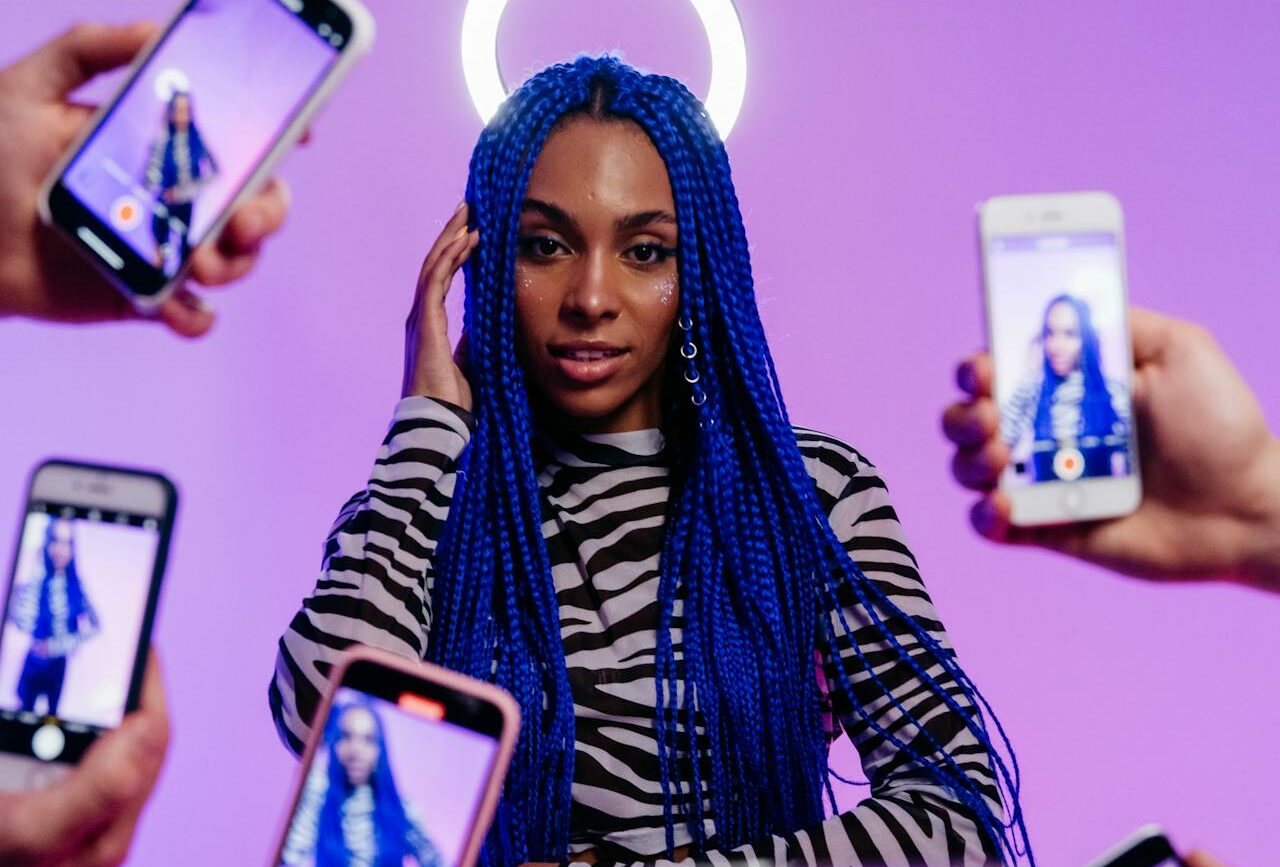Explore how men's grooming turned into marketing's newest battlefield, leveraging shame and redefining masculinity. Are today's men primping for pleasure or fear?

The Hermit Consumer: A 2024 Trend to Watch
As we step into a new year, the ever-evolving landscape of consumer behavior takes center stage, unveiling trends that redefine the marketing playbook.
One such trend we’ll be watching in 2024 is what the Economist is calling the “hermit consumer”. Borne out of the societal shifts catalyzed by the COVID-19 pandemic, this trend is reshaping how businesses approach sales and marketing.
Let’s delve into why the hermit consumer is a trend to watch and how we expect savvy marketers will capitalize on this transformative shift.
What is a Hermit Consumer?
Like the Hikkomori we mention in FADS Marketing, the hermit consumer demonstrates a penchant for home-centered activities and a preference for online engagement.
While the Hikkomori phenomenon is rooted in social withdrawal and isolation, often associated with psychological distress, the hermit consumer’s behavior is shaped by a combination of external factors, such as the global pandemic and changes in work dynamics. Both concepts underscore the growing desire for a retreat from traditional societal expectations, reflecting a broader shift in contemporary lifestyles towards prioritizing safety, comfort, and personalized experiences within the confines of one’s home.
On a Reddit thread, users cited various reasons why they have become hermit consumers in recent years, including dissatisfaction with service quality, concerns about escalating costs, and changing values such as environmental consciousness.
“Apparently, we’ve gotten to the point where people are deciding organically that the juice is not worth the squeeze on their wallet. So they’re staying home and only spending on things they NEED. Less fees, no tips. It’s not the age of the hermit consumer. It’s that we’re fighting against the age of the dairy cow consumer. Stop trying to milk every last cent out of us.” posted user herlanrulz.
What do Hermit Consumers want?
As folks embrace the comfort of home, there’s a shakeup in how businesses and marketers are adapting to a consumer scene that craves safety, convenience, and personalized connections.
Improved Digital Experiences
To nail online engagement, savvy brands are stepping up their game, making messages more personal, and refining the online journey for easy peasy shopping. Thanks to AI’s knack for crunching tons of data, brands get the lowdown on what you like and how you roll online, serving up messages that hit your sweet spot. This personalized touch not only amps up the consumer experience but also gives marketing campaigns an extra punch. With AI in the mix, marketers can predict and cater to the unique tastes of the hermit consumer, turning the online journey into a cozy, engaging ride right from home.
Transparent Pricing and Value Propositions
The hermit consumer isn’t just about the dollars and cents. Sure, they care about costs and fees, but there’s more to it. They’re looking at the whole package—the quality, how useful it is, and if it’s worth their while. It’s not just about the money; it’s about making sense of their needs and tastes. Being upfront about prices and showing what the product or service brings to the table is key to keeping these homebodies happy. They’re a bit like Gen Z, wanting an experience that’s not just about the cash but also ticks all the boxes.
Socially responsible businesses
Smart brands get it. They know the drill of syncing up with what consumers care about, especially when it comes to saving the planet and being socially responsible. To win over the hermit consumer and more, these brands are weaving eco-friendly practices, sustainable sourcing, and ethical manufacturing into their daily grind. But it’s not just about doing the right thing; it’s also about talking the talk honestly and clearly. This builds trust with Gen Z and others who are all about being kind to the Earth and making the world a better place. It’s not just a nod to the hermit’s values; it’s riding the wave of a global shift towards being environmentally and socially conscious.
Empathetic and personalized messaging
In the era of the hermit consumer, where people find solace at home, marketing is pivoting to forge more personal and empathetic bonds. Personalization, powered by data insights, delves into our preferences, behaviors, and wishes, enabling brands to serve up content and experiences that feel tailor-made. Recognizing each consumer’s uniqueness builds a profound emotional connection, addressing specific needs and desires. Whether through personalized recommendations, exclusive perks, or bespoke content, empathetic campaigns demonstrate a brand’s grasp of the hermit consumer’s journey, cultivating loyalty in a market that values personal connections above all.
Virtual alternatives to in-person gatherings
We expect the rise of virtual alternatives to continue, catering to the hermit consumer who prefers engaging online rather than attending events in person. Whether it’s virtual events, product demos, or online communities, these alternatives not only align with the hermit consumer trend but also present a budget-friendly approach for maximum participation.
In 2024, this shift reflects a broader push for diversity and inclusion as virtual engagements break down geographical barriers, offering global accessibility and engaging a diverse audience.
According to one summary of the research done by Matthew Skiles and colleagues, “Overall attendance was 40-120% higher at virtual meetings, and more international attendees were able to participate. Attendance by women increased by 60-260%, and attendance by LGBTQ+ scientists also increased substantially relative to in-person meetings.”
“The virtual world is not going anywhere…we need to have ways that facilitate engaging, meaningful, rich, relevant conversation.” Mary Tinucci said in the Fit for Joy podcast. With this realization, Mary created the Virtual Conversation Cards (VCC) platform. It is designed to facilitate deeper connections and discussions, creating virtual spaces where participants feel a strong sense of belonging and community.
Tools like this prove that while in-person events won’t disappear, increasing options that include remote events, meetings, and gatherings find the middle path, allowing for greater engagement across different preferences.
Examples of brands making the shift
Many brands that originally targeted busy, time-strapped individuals have smoothly transitioned to also cater to the hermit consumer.
Amazon: The e-commerce giant, Amazon, serves as a convenient one-stop-shop for a wide array of products, enabling consumers to make purchases from the comfort of their homes. Its extensive product range and efficient delivery services align perfectly with the desire to avoid busy shopping centers.
Etsy: Geared towards those interested in unique and handmade products, Etsy provides a platform for independent sellers to showcase their creations. Consumers can explore a diverse range of gifts, including personalized gifts, easily from home.
Netflix: Streaming services like Netflix have revolutionized home entertainment by offering a vast library of movies, TV shows, and documentaries for at-home enjoyment. While the initial expectation was that streaming services would replace movie theaters, it seems the industry is finding a middle ground, appealing to and reaching consumers where they prefer to be while offering the more personalized experience we all want.
Instacart: While grocery delivery isn’t a new concept, the consumer market for it has transformed significantly, giving rise to services like Instacart. We’ve seen the platform expand to allow same-day delivery of groceries, gifts, and other essentials from a variety of local shops making online shopping so easy we can do it anywhere.
Keeping an eye on 2024 marketing trends
We’ll be keeping a keen eye on this trend. It’s not just a phase; it’s a paradigm shift that will define the marketing landscape in the years to come.
As businesses adapt to the needs of the hermit consumer, they’re not just tapping into a current trend but are finding that middle path of overlapping preferences between growing markets. This shift towards safety, convenience, and personalized connections resonates well with the values of Gen Z, setting the stage for a more inclusive and consumer-centric future. Understanding and catering to the hermit consumer’s preferences could well be the key to unlocking broader success.
They’ve got their hooks in you.
FADS rise quickly, burn hot and fall out. They say you’re fat, you’re no fun, you need to relax, and you might even die alone.
In fact, FADS bank on the fact that you already believe all of that.
Ready to learn how it works?


